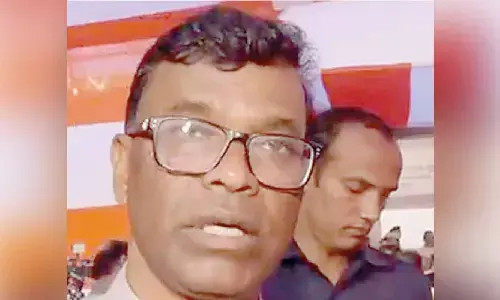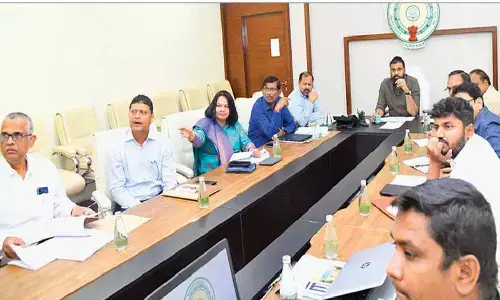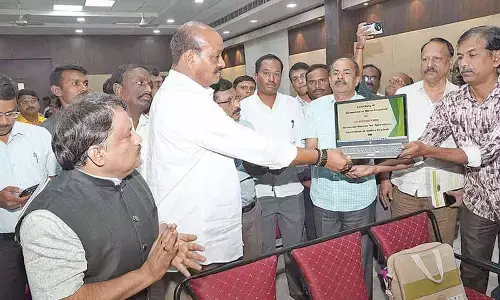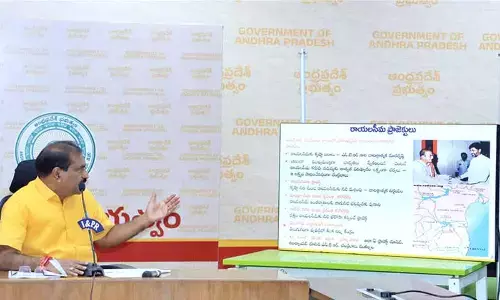Submarine cable, lifeline of India Internet

Submarine cable, lifeline of India Internet
99% of world data traffic is carried on submarine cables. As it is laid on the seabed, the chances of the cable getting damaged by any vessel are remote as no vessel will go to such depth
On August 10, 2020, PM Modi inaugurated Chennai-Andaman Nicobar Island (CANI) submarine cable project that provides better internet and mobile connectivity in these islands. This event has raised interest in everybody about submarine cable communications. 99 per cent of world data traffic (which is increasing exponentially) is carried on submarine cables.
Submarine cable communications can be provided by those telecom operators who are having ILD (International Long Distance) license. ILD license is applicable up to twelve nautical miles from coast. Seventeen submarine cables are landing in our country.
Five more are on the way. 16 Cable Landing stations (CLS) are there at Mumbai (nine), Chennai (four), Ernakulam, Tuticorin and Trivandrum. BSNL plans to construct one at Digha, West Bengal for the submarine cable between India and Southeast Asia. At Mumbai (Five) and at Chennai (three) are under construction by the private ILD operators. Among twenty-one ILD operators, seven have their own CLS.
At CLS, submarine cable traffic is connected to terrestrial traffic. CLS consist of SLTE (Submarine Line Terminating Equipment), power feeding equipment, interconnect equipment, cable management system and EMS & NMS (Event Management System and Network Management System).
As submarine cable has less flexibility, it can't be laid up to CLS, which will be inside the city. The submarine cable is terminated at Beach Manhole and from there Optical Fiber (OF) cable is laid, with route diversity, to CLS. The availability of submarine cable is better than terrestrial OF cable. It is not damaged by marine life.
As it is laid on the seabed, the chances of the cable getting damaged by any vessel are remote as no vessel will go to such depth. The entire length of submarine OF cable is manufactured and laid in one go without any joint (3,000 - 5,000 Km). The various stages for laying submarine cable are marine survey, Rout Clearance (RC), Pre-Lay Grapnel Run (PLGR), cable laying and Post-Lay Inspection & Burial (PLIB).
In PLGR, by dredging a grapnel any obstacle that could obstruct the plough during installation is cleared. End of life cable, identified during preliminary survey, is also removed. The cable is laid (not buried) on the seabed by using specially modified ship using plough. Cutting the seabed is not allowed in order to protect the coral and marine life. The laying speed is about four to five nautical miles per day. PLIB is the last stage of cable installation.
A ROV (Remotely Operated Vehicle) surveys the areas where plough could not operate such as the 500m zone of offshore installations or zones of cable crossings. At those places, the ROV buries the cable to the required depth. The window for laying submarine cable in Bay of Bengal is January to April. As monsoon season is less, the window for Arabian Sea is October to April.
Worldwide 380 Submarine OF cable systems are in operation, with a total length of 1.2 million route KM. Revenue earned by the operators is 13 billion US dollars. Very few submarine cable systems have ring architecture which provides full protection of traffic. Southeast Asia is the key region for submarine cable traffic. Indian Ocean handles about 7 per cent of traffic.
Facebook, Google, Microsoft and Amazon own submarine cables. Submarine cable system consist of wet plant, dry plant and marine operation sub systems. Alcatel Submarine Networks (ASN), NEC, Subcom and Huawei Marine Networks are the key players in this field handling 90 per cent of market. SEAIOCMA(Southeast Asia and Indian ocean cable maintenance agreement) which is a consortium managed by 46 cable owners maintain the wet plant of submarine cables systems including repair of submarine cables. The dry plant is like any transmission station and is maintained by telecom engineers.
In the year 2006, BLCS (Bharath Lanka Cable System) of 368 Km length was commissioned by BSNL with Tuticorin as cable landing station. Raman optical amplifiers are used at regular intervals to maintain desired optical signal level. A 24 OF cable is laid in this route. The cable was laid in 28 days. This is the BSNL's first investment in international submarine cable system. Its present capacity is 960 Gbps (Gaga bits per second. This turnkey project was handled by NEC.
Submarine cable projects to islands:
For providing communications to islands, though satellite medium option is available, because of capacity limitation, submarine optical fiber cable is the preferred medium. Latency is another issue with satellite medium. And also satellite medium is costly.
Total islands in our country are 1208 out of which 572 are there in Andaman and Nicobar (A&N) islands and 36 in Lakshadweep. 38 out of 572 islands in A&N islands are inhabited and 11 out of 36 are in Lakshadweep.
The Capital Expenditure (Capex) for providing submarine cable Systems to these islands is met from USOF (Universal Service Obligation Fund). This fund is created by DoT (Department of Telecom) for compensating the TSPs (Telecom Service Providers) for taking up the unremunerative telecom projects.
All the TSPs contribute 3 per cent of their AGR (Adjusted Gross Revenue) as USO levy. The project cost of commissioning submarine cable system between Chennai and Port Blair (1400 Km) and Port Blair to other islands (900 Km) is Rs 1224 crore. Capital Expenditure is met by USOF and operational expenses by Ministry of Home affairs.
The capacity of Chennai-Port Blair link is 200 Gbps and Port Blair to other islands (Havelock, Little Andaman, Car Nicobar, Kamorta, Great Nicobar, Long Island and Rangat) is 100 Gbps. The project was executed by BSNL and TCIL (Telecom Consultants of India Limited) was Technical Consultant.
M/s NEC has provided technical assistance during the installation and bulk of the fiber has been provided by them. Four fiber Submarine OF cable is laid in this route. 1500 V power is fed in the cable for powering the active repeaters located at regular intervals on the cable. The project was launched on December 30, 0218 and has been completed before the deadline. This system is owned by DoT.
(The author is a former Advisor, Department of Telecommunications (DoT), Government of India)
















